- Major investment banks and Tesla CEO predict recession
- Yen touches all-time low
- Dollar recovers
- On Thursday Germany releases PMI data.
- US initial jobless claims are published on Thursday.
- Crude oil inventories are printed on Thursday.
- The MSCI Asia Pacific Index fell 1.7%
- The MSCI Emerging Markets Index fell 2.2%
- The euro was flat to $1.0523
- The Japanese yen fell 0.3% to 136.18 per dollar
- The offshore yuan fell 0.5% to 6.7225 per dollar
- The British pound fell 0.1% to $1.2262
- Brent crude fell 4.1% to $110.09 a barrel
- Spot gold fell 0.13% to $1,8304.39 an ounce
Key Events
As more market heavy hitters warn of an impending recession, futures on the Dow Jones, S&P 500, NASDAQ 100, and Russell 2000 slumped on Wednesday along with global stocks. Global investment banks, Morgan Stanley and Goldman Sachs forecast further stock market losses while Tesla (NASDAQ:TSLA) CEO, Elon Musk warned a recession is more likely than not.
Treasury yields tumbled as investors bought safe-haven assets.
Global Financial Affairs
US futures were deep in the red and have been falling since the end of regular trading on Tuesday, suggesting the equity market will end its two-day rally.
Contracts on the NASDAQ 100 and the Russell 2000 led the slide. Technology and smaller firms are the first to sell off as inflation and interest rates rise. The tech sector's valuation had already maxed out but small companies don't have the flexibility and resources larger companies have to navigate the increasingly challenging economic climate.
From a technical perspective, we think the S&P has room for an upward correction within the downtrend.
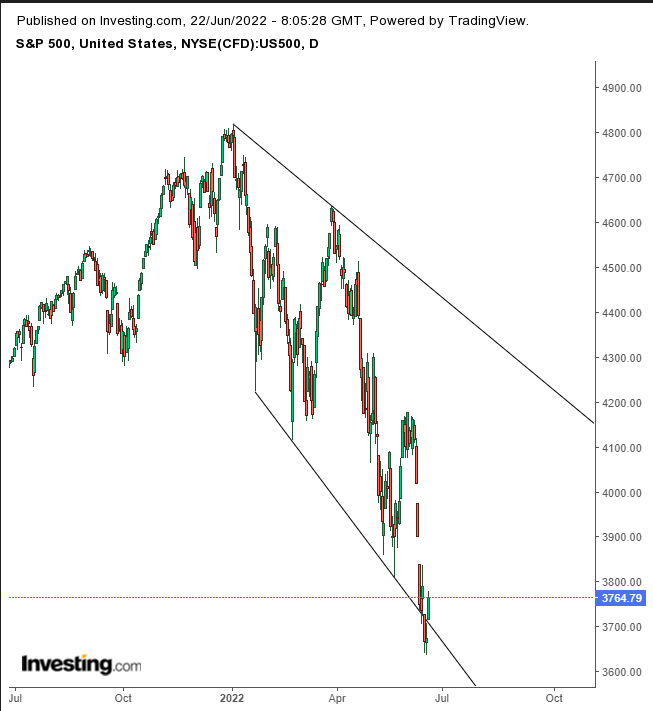
Futures have bounced from the bottom of a Falling Channel, which means the preceding selloff may have been exaggerated, attracting dip buyers, who could push up prices back toward the channel top. That, however, is not guaranteed, and falling channels could steepen by breaking the floor of a primary falling channel. However, even if the price will rebound toward the channel top, it doesn't mean it will happen today.
The STOXX 600 Index plunged to its lowest since Feb. 1, 2021, erasing three days of gains within the first hour of trading. Cheaper valuations following the sharp selloff lured in dip buyers. Miners and energy underperformed amid slumping commodities.
The FTSE 100 opened significantly lower after data showed that UK inflation hit a new four-decade high due to surging food and energy costs. Even a weakening pound sterling didn't help the export-heavy index. The FTSE 350 Industrial Metals & Mining underperformed, falling 4%, as the strengthening US dollar and recession concerns weighed on industrial metals.
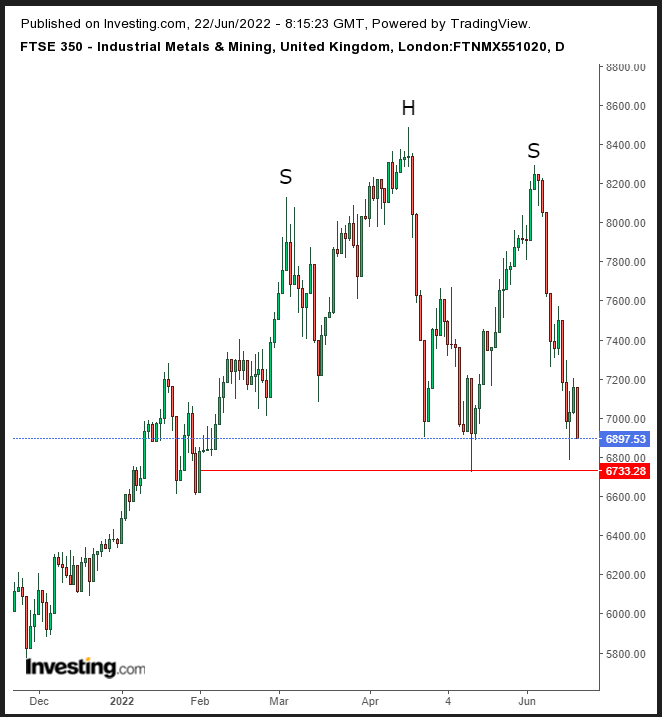
The index fell to its lowest since Jan. 31, gearing to complete an H&S top.
Asian shares were red across the board as they ignored yesterday's rally on Wall Street and joined US futures in a selloff.
The yen briefly fell to a record low.
South Korea's KOSPI plummeted 2.74% to a fresh 19-month low. Hong Kong's Hang Seng plunged 2.6% on a report that China may ban third-party online platforms from offering medicine—underperforming the region.
US shares extended a rebound on Tuesday with dip buyers seeking bargains after last week's crash wiped out almost $2 trillion in value from the S&P 500.
The NASDAQ 100 outperformed, jumping 2.49% followed closely by the S&P 500 with a 2.45% gain, led by the Energy and Consumer Discretionary sectors.
Shares in beauty behemoth, Revlon (NYSE:REV) jumped a massive 62% after its Chapter 11 bankruptcy filing. Shares in snack and convenience food giant, Kellogg Company (NYSE:K) rose 2% on plans to break the company into three entities.
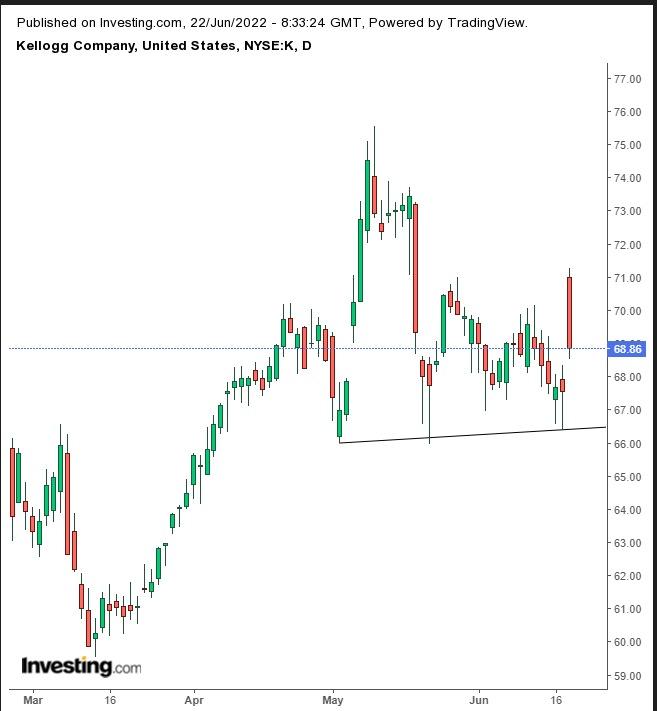
Despite yesterday's gains, the stock gave up more than a 5% rally, as the shoulders of an H&S top provided resistance. A break below $66 could have the price retest March lows.
Treasury yields on the 10-year note fell as investors again rotated into havens.
The dollar rose, pushing gold down.
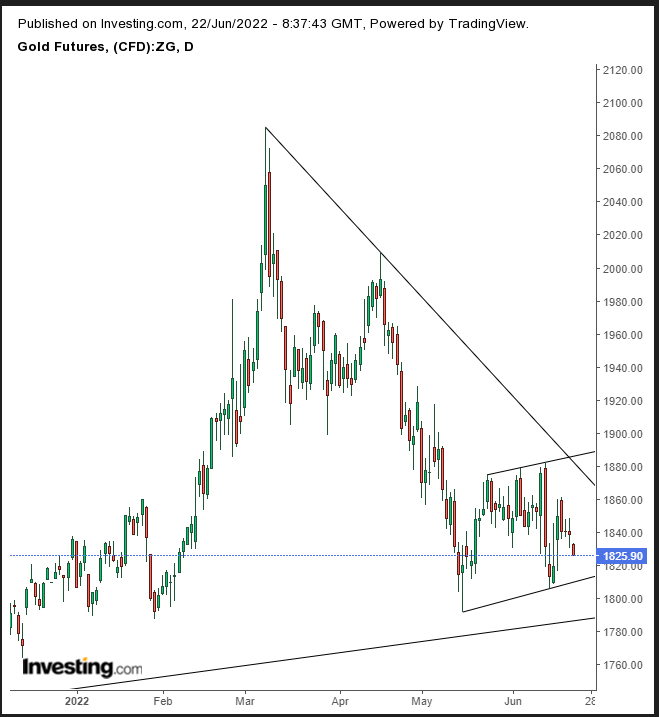
The yellow metal is falling toward the bottom of a new Rising Channel as the price squeezes between the long-term and short-term downtrend.
Bitcoin fell toward $20,000, again, perhaps developing a continuation pattern.
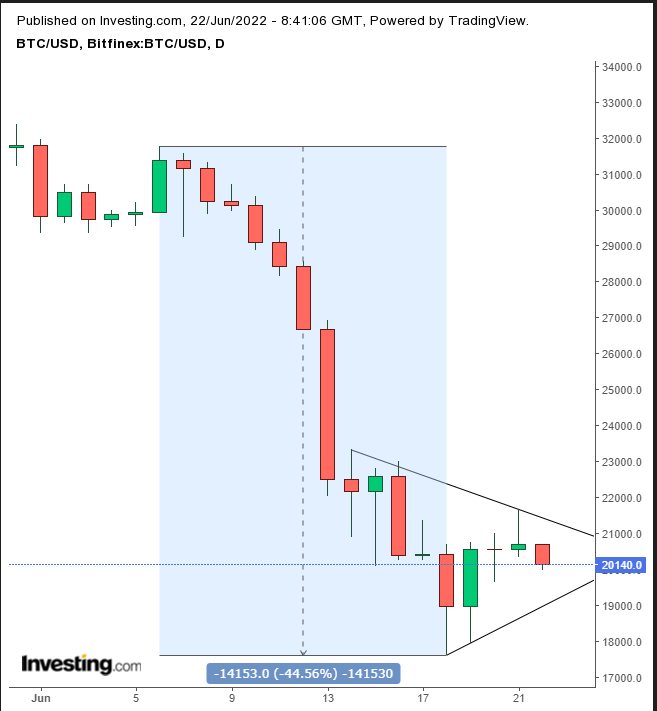
The digital currency has been ranging in a pennant formation, bearish after the preceding sharp selloff. A downside breakout would signal a resumption of the crash. According to the principles of technical analysis, the move before the pennant is expected to repeat on the downside, implying a target of around $5K.
Oil extended a selloff, falling below $105 for the first time since May 12.
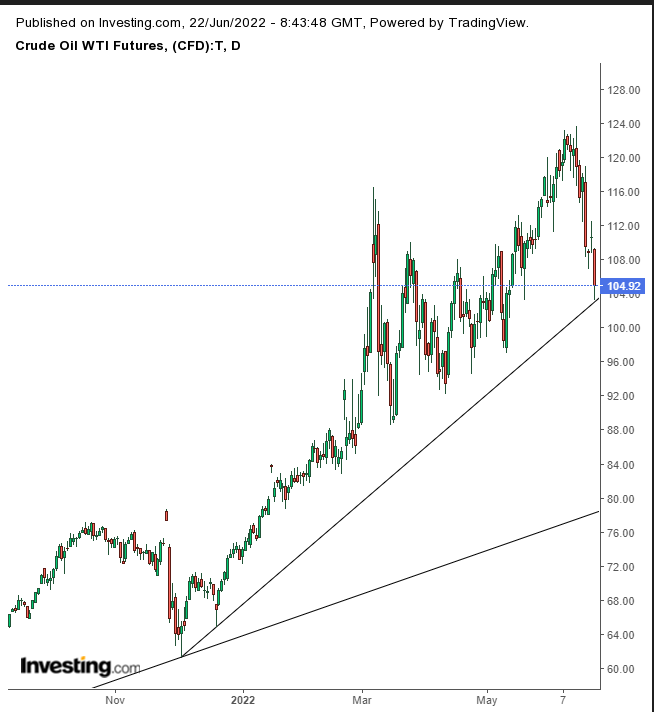
The price bounced off the uptrend line since the Dec. 2 low.
